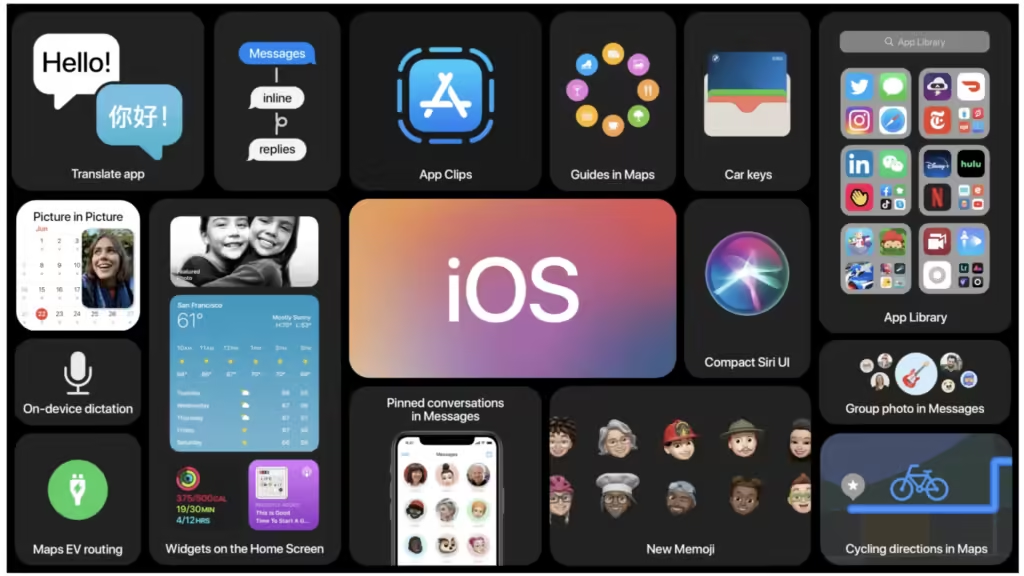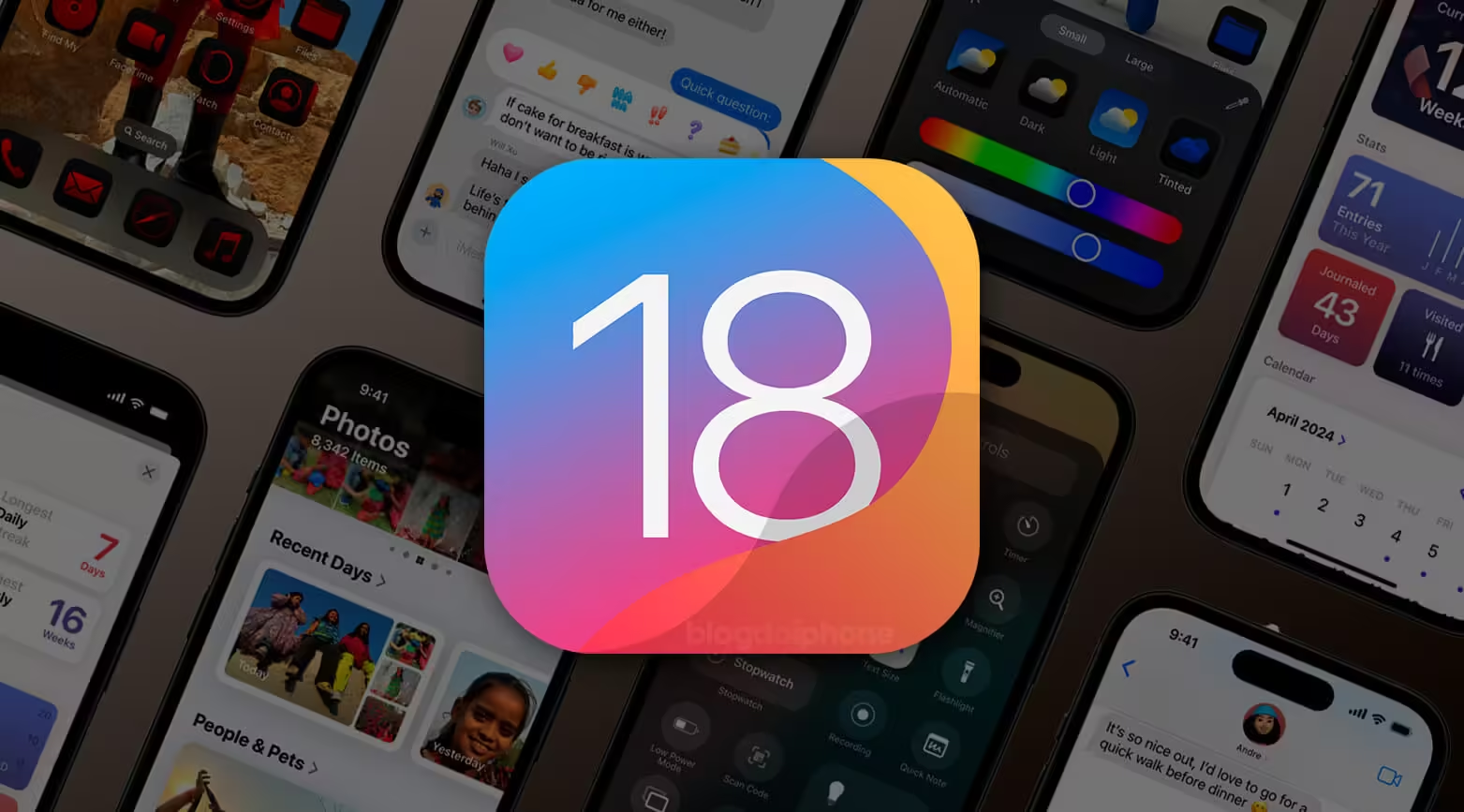Apple’s latest release, iOS 18, brings exciting updates to UIKit, the core framework for building user interfaces in iOS applications. UIKit has always provided developers with tools to create responsive, user-friendly interfaces, and iOS 18 adds even more power and flexibility. In this post, we’ll dive into the newest UIKit features that make it easier to build stunning iOS applications and streamline the development process.
1. Enhanced Animation API
With the emphasis on smooth and responsive animations in modern apps, iOS 18 introduces improvements to the UIKit animation API. These enhancements make it easier to create complex animations with minimal code.
• Spring and Customizable Damping Options: The new APIs allow developers to adjust spring and damping values more finely, resulting in smoother, more realistic animations. This is especially helpful for elements like buttons or icons where responsiveness is key.
• Interactive Transitions: UIKit’s animation tools now provide more support for interactive transitions, making in-app navigation feel seamless. This is a big win for apps that rely on custom transitions between screens or modals.
2. Updated Gesture Recognizers
Gesture recognizers in UIKit have been revamped in iOS 18, making them more intuitive and customizable. These updates enhance user interactions and improve the flexibility of handling gestures.
• Combined Gesture Recognition: Previously, combining gestures could be challenging, but with iOS 18, developers can now chain gestures together easily. For instance, swipe and pinch can be recognized simultaneously for more complex interactions.
• Context-Aware Gestures: New context-aware gesture options mean the UI can respond differently based on the specific view context, making gestures more powerful and dynamic.
3. Native Support for Custom Fonts in Dynamic Type
iOS 18 brings native support for custom fonts within Dynamic Type, enabling applications to maintain consistent typography across all devices and accessibility settings.
• Automatic Scaling for Custom Fonts: Previously, custom fonts didn’t automatically scale with Dynamic Type, which required extra work for accessibility. Now, UIKit automatically scales custom fonts, making it easier to create inclusive designs.
• Improved Font Management API: Developers can now manage custom fonts more efficiently, applying them globally across the app and using new APIs to better control font sizes, weights, and dynamic adjustments.
4. Enhanced UIKit Components for SwiftUI Integration
While SwiftUI continues to grow in popularity, many developers still rely on UIKit for complex app components. UIKit in iOS 18 brings enhanced compatibility with SwiftUI, allowing developers to use both frameworks seamlessly.
• SwiftUI Component Embedding: Developers can now embed SwiftUI components directly within UIKit views with fewer code adjustments, creating a smoother experience for those building hybrid interfaces.
• UIViewControllerRepresentable Improvements: New updates make it easier to use UIViewControllerRepresentable to bridge between UIKit and SwiftUI components, improving interoperability and making it simpler to integrate SwiftUI elements into existing UIKit-heavy apps.
5. UIKit’s New Grid Layouts for Collection Views
Building complex grids in UIKit has often required custom layouts or third-party solutions, but iOS 18 introduces native grid layout support for collection views, inspired by SwiftUI’s grid system.
• Grid-Based Collection Views: The new grid layout allows developers to create grid structures within collection views without extensive customization. This is particularly useful for apps that display photos, product grids, or content cards.
• Adaptive Layouts: iOS 18’s grid layout is responsive, automatically adjusting the number of columns based on screen size and orientation, making it ideal for universal apps with diverse content types.
6. New Accessibility Tools
Apple’s ongoing commitment to accessibility continues in iOS 18, with UIKit additions that make apps even more accessible to users of all abilities.
• VoiceOver Improvements: UIKit in iOS 18 enhances VoiceOver integration, allowing developers to create custom descriptions more easily and set navigation landmarks, which improve screen reader experiences.
• Dynamic UI Adjustments for Accessibility Needs: UIKit now supports dynamic adjustments for high-contrast modes, larger touch targets, and other accessibility settings, giving developers more control over their app’s appearance and functionality for all users.
7. Simplified Alert and Sheet Presentation
UIKit has revamped the way modals, sheets, and alerts are presented in iOS 18, adding more customization options and making it easier to adapt to different device types.
• Persistent Bottom Sheets: Developers can now implement persistent bottom sheets natively within UIKit, similar to popular designs on Android. This new feature is perfect for displaying options or information without fully covering the main content.
• Customizable Alert Styles: Alerts now support more customizable UI elements, allowing developers to tailor the look and feel of alerts to match the app’s design. This includes options for adding images, icons, and interactive buttons.
8. Improved Performance and Memory Management
UIKit in iOS 18 also brings significant improvements in performance and memory usage, especially for complex views with high interaction rates.
• Optimized Rendering: UIKit now handles rendering more efficiently, reducing lag and increasing responsiveness on older devices. This is essential for high-performance apps that involve intensive graphics or multiple view updates.
• Memory Management Enhancements: New memory management improvements allow developers to better control view lifecycles, reducing memory leaks and ensuring smooth operation even when multitasking.
Embracing UIKit’s New Potential in iOS 18
The latest UIKit updates in iOS 18 provide developers with tools to build more dynamic, accessible, and performant apps. Whether you’re enhancing animations, optimizing custom fonts for accessibility, or integrating with SwiftUI, these new features make it easier than ever to create high-quality, user-centric iOS applications.
For developers who’ve been working with UIKit for years, these updates mean less reliance on third-party tools and more native capabilities. And for those combining UIKit with SwiftUI, iOS 18’s improvements allow for seamless hybrid development that leverages the best of both frameworks.

Internal Links
For more updates on iOS development, check out these articles on the Droidmate Blog:
• SwiftUI in 2024: Is It Ready for Large-Scale Applications?
• iOS 18 Preview: What to Expect and How to Prepare Your Apps

